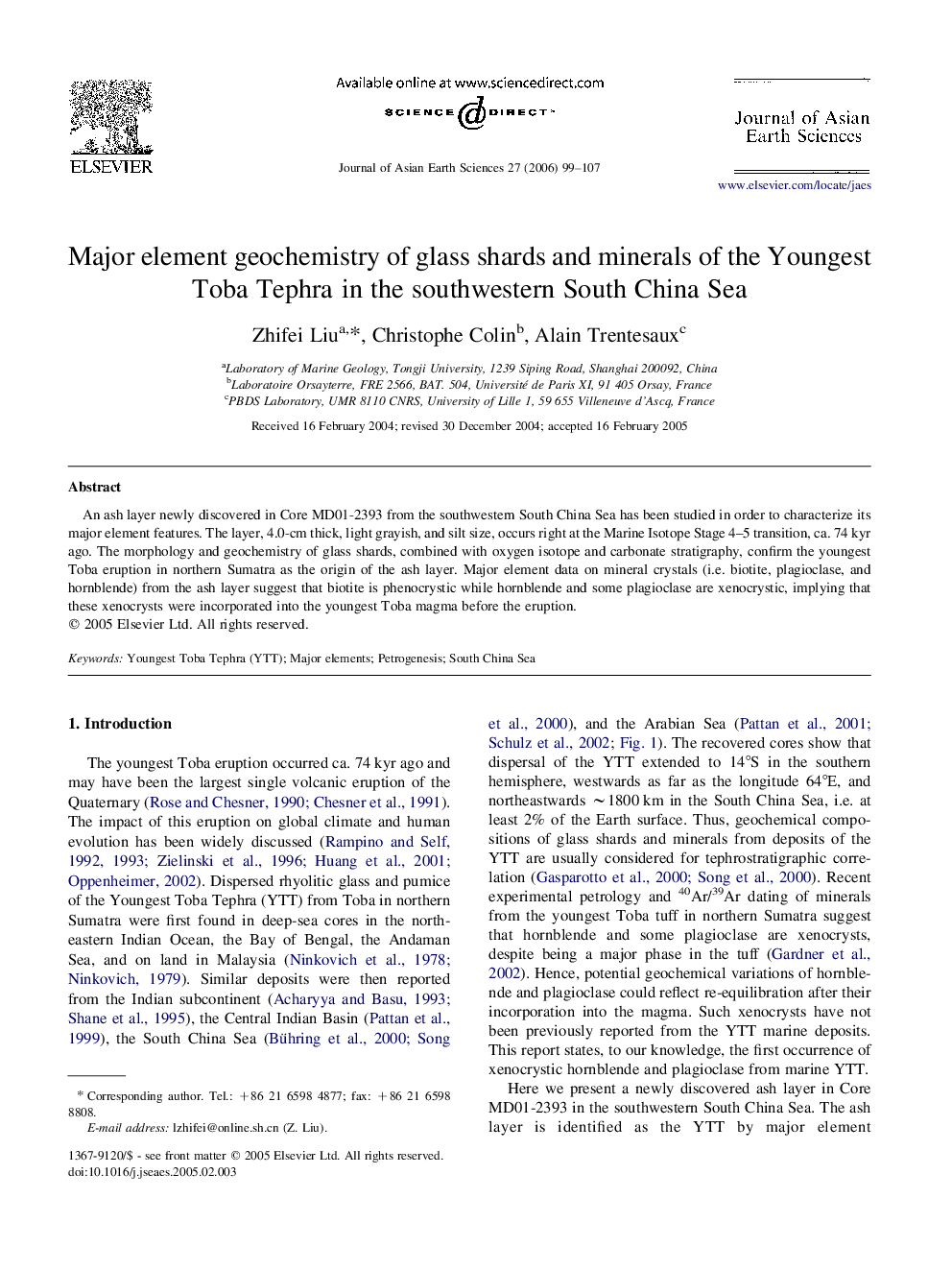| Article ID | Journal | Published Year | Pages | File Type |
|---|---|---|---|---|
| 4732703 | Journal of Asian Earth Sciences | 2006 | 9 Pages |
An ash layer newly discovered in Core MD01-2393 from the southwestern South China Sea has been studied in order to characterize its major element features. The layer, 4.0-cm thick, light grayish, and silt size, occurs right at the Marine Isotope Stage 4–5 transition, ca. 74 kyr ago. The morphology and geochemistry of glass shards, combined with oxygen isotope and carbonate stratigraphy, confirm the youngest Toba eruption in northern Sumatra as the origin of the ash layer. Major element data on mineral crystals (i.e. biotite, plagioclase, and hornblende) from the ash layer suggest that biotite is phenocrystic while hornblende and some plagioclase are xenocrystic, implying that these xenocrysts were incorporated into the youngest Toba magma before the eruption.
